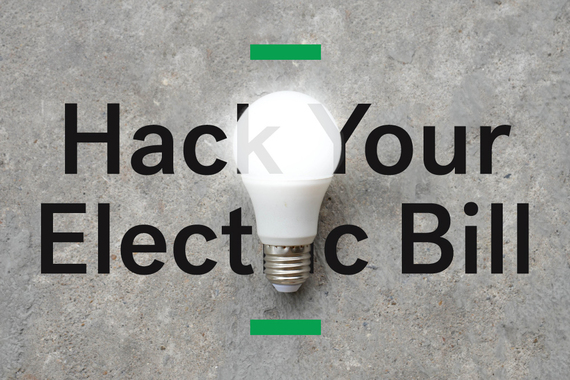
Before you start plotting a move to cooler climes, find out how to save electricity with these hacks and then start focusing on more fun tasks -- like what to do with all of the money you're saving!
1. Identify the "energy vampires" in your home
"Appliances that use a remote control, have a continuous display, or have an external power supply all continue to use energy, even when they're turned off," says Gene Wang, CEO and co-founder of People Power, a company that provides apps, cloud, and mobile service.
Translation: Simply remembering to turn off your plasma TV isn't enough. According to Wang, even when it's turned off, a TV still sucks up 1,400 kilowatt-hours annually, which could mean an extra $150 per year added to your bill. Invest in a smart power strip and plug like-used devices such as TVs, game consoles, and cable boxes into the same one, advises Wang. Not only will the device cut off phantom power, but it can also be set to turn on and off automatically.
2. Invest in a power monitor to optimize energy usage times
"You want to use power when the energy rates are lower and there's less demand on the power grid," says Joel Worthington, president of Mr. Electric LLC, an international electrical installation and repair company. A power monitor can help you figure out how much energy you're using throughout the day so that you can make changes accordingly. For example, you may find it's more economical to run the dishwasher just before bedtime.
3. Wash clothes in cold water and line-dry
According to Project Laundry List, if you dry four loads of laundry in an electric dryer per week, it'll cost you an extra $110 per year (that's basically a membership to Hulu). Wash your clothes in cold https://www.youtube.com/watch?v=aWoSWNwtV KA water whenever possible and then hang them to dry on your own DIY version of an indoor clothesline (if DIY isn't your thing, check out laundrylist.org for ready-made products for line-drying inside).
4. Use small appliances for small meals
Eating alone? Heat up your food in a toaster oven, which can use up to half as much energy as an electric oven. In the mood for a cup of tea? Heat the water in an electric kettle rather than turning on a stove burner. And when you do use your stove-top, be sure to use the burner closest to the size of your pot. According to SmarterHouse.org, "a 6-inch pan on an 8-inch burner wastes over 40% of the heat produced by the burner."
5. Install motion-activated power outlets
Can't remember whether you unplugged your curling iron before you left the house? Use a motion-activated outlet adapter. It will automatically turn off a gadget or appliance that's plugged into the adapter when it senses no one is in the room using it, says Worthington. If you're a renter, mention this option to your landlord, who will probably be only too happy to reduce wasted energy use (and potentially http://www.thefreedictionary.com/electrician prevent fires too).

6. Stock your fridge
Not only will your stomach thank you, but also a full refrigerator requires less energy to stay cool than an empty one. And while you're at it, be sure to gently vacuum the coils twice a year. "Dust makes the coils https://www.youtube.com/watch?v=aWoSWNwtVKA heat up and work harder," says Worthington. The harder your fridge works, the more money you'll ultimately spend on your electric bill.
7. Take advantage of solar gain
Why heat or cool a room if you aren't using it? In the summer months, keep shades drawn during the hours when sun exposure is highest. In cooler months, let the sunlight in, which will give your bulbs -- and wallet -- a break. Keep air vents closed too.
8. Convert to LED bulbs
Yes, they're more expensive upfront -- an LED light bulb costs about $8 per bulb, whereas an incandescent is around a buck -- but an LED bulb will last a whopping 25,000 hours (or almost 23 years, assuming three hours of use per day) compared with 1,000 hours for a regular old bulb. Not to mention that in that same 23-year timespan, an average bulb will cost you $180 in electricity at the current average rate, compared with just $30 with an LED bulb. Renters can take the bulbs to their next place to continue the savings.
9. Adjust the temperature of your water heater
According to the U.S. Department of Energy, heating water accounts for 10% to 15% of energy consumption in your home. Most water heaters are preset to 140 degrees, which is way more heat -- and expense -- than yo u need. Worthington advises turning yours down to 120 degrees, which can save you 6% to 10% each year on your heating costs. Renters: Don't try this alone. This is the kind of task that your landlord should handle; ask your landlord to dial it down for you.
What are your tips when friends ask for advice on how to save electricity? How do you lower your electric bill? Share your hacks in the comments!
Also on HuffPost:
The Best Cleaning & Organizing Tips
The Best Cleaning & Organizing Tips
http://www.huffingtonpost.com/trulia/how-to-hack-your-electric_b_9779212.html
No comments:
Post a Comment